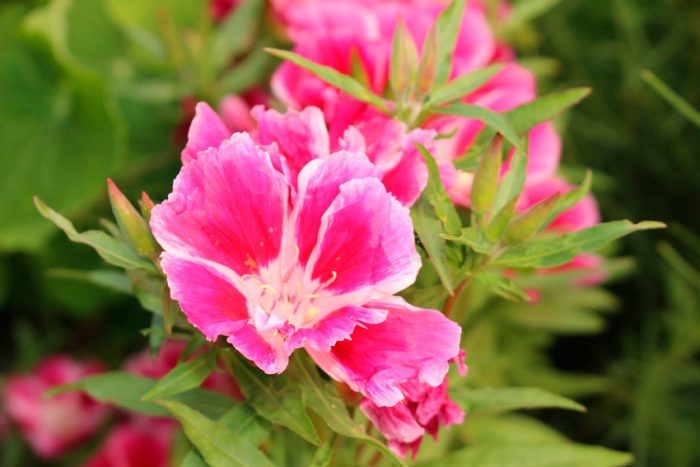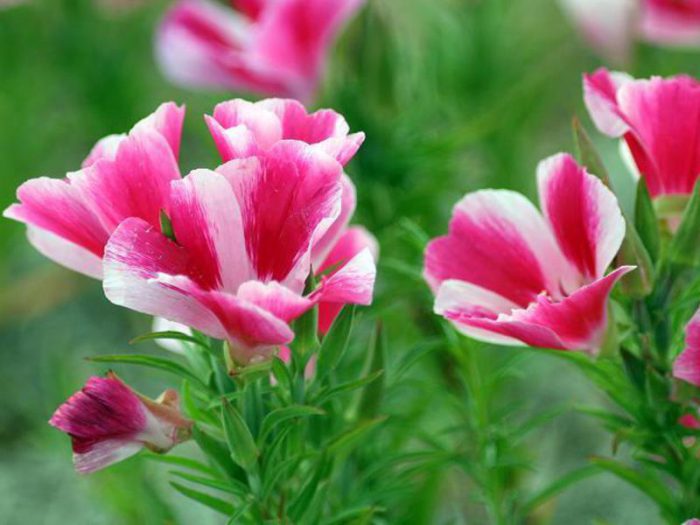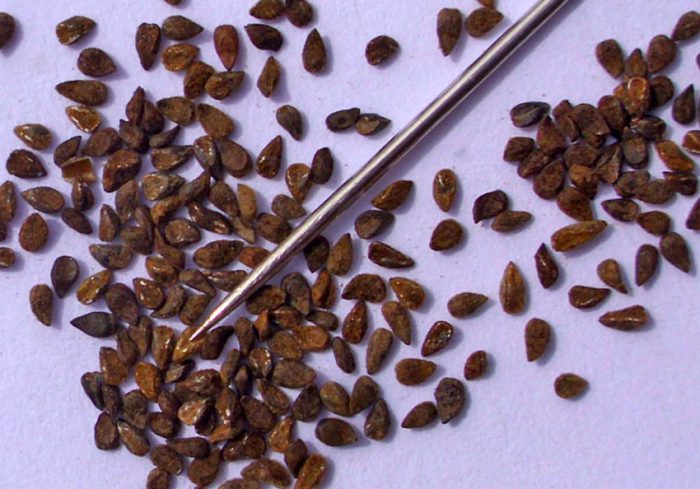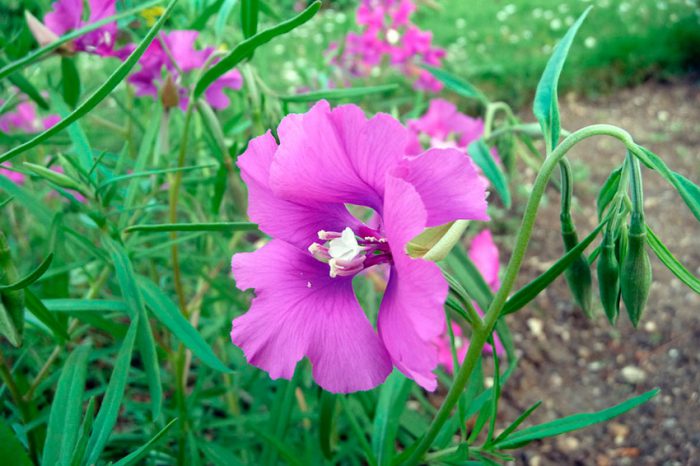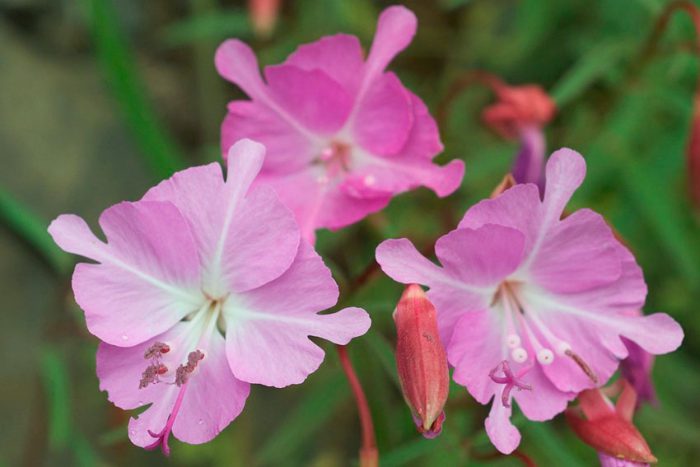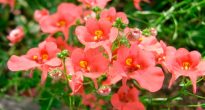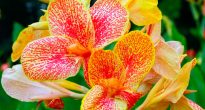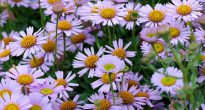Clarkia is an annual herb belonging to the fireweed family. This genus is very close to godetia and some botanists combine these two plants into one genus. This flower was named in honor of Captain W. Clark, who brought it to Europe from California in the 19th century. In nature, this plant can be found in Chile and in western North America. This genus unites about 30 species, while only 3 are cultivated.
Content
Features of clarkia
Clarkia is a herbaceous annual that can vary in height from 0.3 to 0.9 meters. On the surface of erect branched shoots, there is often pubescence, consisting of short villi. Sedentary alternately arranged leaf plates have an oval-elongated shape and a light gray or deep green color. Axillary flowers can be double or simple, they have the correct shape, reach 35 mm in diameter. And they can be painted in different color shades. As a rule, they are part of the apical inflorescences, which are racemose or spike-shaped, but sometimes lonely flowers are also found. The flower has a tubular calyx; the corolla includes 4 three-lobed or whole petals, tapering at the base into a marigold. The fruit is an elongated polysperm.
Growing clarkia from seeds
Sowing
Such a plant is grown from seeds in two ways: seedless and through seedlings. If the cultivation is carried out in a seedless way, then the seeds are sown directly into open soil. Sowing is carried out in April or in the first days of May, it can also be done in late autumn before winter. When preparing a site for sowing, for every 1 square meter, 1 kilogram of peat and 1 large spoonful of superphosphate and potassium sulfate must be added for digging. The seeds of the plant are quite small, they are sown in nests of 4 or 5 pieces. In this case, the distance between the nests should be from 20 to 40 centimeters. It is not necessary to bury the seeds in the soil; they should only be pressed down a little and sprinkled with a thin layer of soil. The first seedlings may appear within half a month, and you will need to thin them out, but you should take into account that during flowering clarkia looks much more impressive in a dense bush.If the sowing was carried out in the fall, then sometimes the seedlings also have time to appear before winter comes, while they are well preserved under the snow cover. When shoots appear in the spring, they will need to be thinned out like a carrot.
Growing through seedlings
If clarkia is grown through seedlings, then young seedlings will be reliably protected from cold rains, frosts, sudden changes in temperature and strong winds. It is recommended to sow seeds in March, in this case flowering at clarkia will begin in the first days of June. Seeds are sown in a slightly acidic substrate. It is unnecessary to deepen them, but you should only press down with a plate and pour from a spray bottle. Cover the container with glass and put it in a warm and lighted place, but there should be no direct sunlight there. After the first seedlings appear, the shelter should be removed. The container should be kept in a dry, warm place with good ventilation at all times. The pick is done very early, after the appearance of the first true leaves.


Watch this video on YouTube
Planting clarke in open ground
What time to plant
Clarkia is transplanted into open soil in May. In the event that the soil on the site does not have a pH suitable for a given plant, then this can be corrected. In order to acidify the soil, you can use one of three methods:
- 1 m2 add 1–1.5 kilograms of peat;
- 1 m2 add 60 grams of sulfur;
- water the soil with a solution consisting of a bucket of water and 1.5 large tablespoons of citric or oxalic acid.
In the event that the soil is excessively acidic, then lime is added to it. If it is oily, then this can be corrected by adding sand for digging. It is also necessary to fertilize the soil, and what fertilizers to use for this, it is said in the section on growing clarkia in a seedless way. Site preparation should be done at least half a month before planting.
How to plant
It is not necessary to plant seedlings one by one, but the plants should be taken from the container in small groups together with a lump of earth. Then this group is planted in one hole. It should be noted that the distance between the holes can vary from 20 to 40 centimeters. Adult plants will need support, as they have very thin shoots, so do not forget to stick a long rod or stick near each hole. Different varieties of clarkia should be planted away from each other, since there is a high probability of their cross-pollination. When the bushes are planted, they need to be watered and pinched a little so that they grow more bushy.
Care features
It is relatively easy to grow clarkia, and even a beginner can easily cope with this task. Watering should be done only when there is a prolonged dry hot period. In this case, watering should be done only a couple of times every 7 days. At other times, rainwater will be enough for such flowers. When watering, it should be borne in mind that the liquid should be quickly absorbed into the soil, and not stand for a long time around the bush. Top dressing should be done only during the period of bud formation and flowering, and a complex mineral fertilizer is recommended for this. The frequency of dressing is 1 time in half a month. From fertilizers it is recommended to use Rainbow or Kemira, while organic matter cannot be introduced into the soil. In order for the flowering to be long and lush, it is necessary to remove fading flowers in a timely manner.
Diseases and pests
From harmful insects, mealybugs can settle on clarkia. You can understand that the bush is infected with this pest by the presence of a waxy, cottony plaque, which may be on the aerial part of the plant. To destroy this insect, it is recommended to process it with confidor, aktara or phytoverm.
In the event that in the area where clarkia grows, the soil is loamy, this can contribute to the development of a fungal disease.The fact that the bush is infected can be understood by the specks of a rusty-yellowish color, which have a brown border, which are placed on the leaf plates. To get rid of this disease, you should treat the bush with a fungicidal agent (oxych or Bordeaux liquid). If you plant this flower in a suitable soil and properly care for it, then it will have a very high resistance to both diseases and harmful insects.
After flowering
Seed collection
This plant is capable of multiplying without your participation by self-seeding. In spring, you only need to carefully thin out the seedlings. If you need seeds, they can be collected very easily. When the plants are in bloom, you will need to mark the most spectacular flowers. When they begin to fade, then you will need to put on gauze bags on them. The seeds will mature 4 weeks after the flower withers, and the color of the capsule should turn brown. Cut the pods and sprinkle the seeds onto a newspaper. These seeds can be sown before winter or poured into a paper bag, where they will be stored until the next spring.
Wintering
When the flowering of the clarke ends, the bushes, if desired, can be cut to the surface of the soil. And during the autumn digging of the site, it will be necessary to remove the remnants of the plants and burn them. It is not recommended to throw them away, as pathogenic microorganisms or fungi may appear in such plant residues.
Types and varieties of clarkia with photos and names
Only three types of clarkia are cultivated by gardeners, namely: clarkia marigold, or elegant clarkia; clarke is pretty, or clarke is pubescent; Clarkia Breveri.
Clarkia graceful, or marigold (Clarkia unguiculata, Clarkia elegans)
This species can be found in natural conditions in California. A branchy lush annual plant in height can reach 100 centimeters. Thin enough powerful shoots are lignified from below. On the surface of oval greenish-gray leaf plates there are veins of red color, their edge is unevenly sparsely toothed. The flowers are regular in shape and four centimeters in diameter. They can be double or simple and have different colors: red, pink, white, purple and blue. They are placed one at a time in the leaf sinuses. Small seeds germinate for about 4 years. It blooms luxuriantly in July – September. This species is often grown in mid-latitudes. The most popular varieties:
- Albatross. Double flowers are white. A branchy bush reaches a height of about 0.75 m.
- Purpurkenig. Double flowers have a carmine color and a diameter of 35 to 40 mm. The bush reaches a height of 0.8 to 0.9 m.
- Salmon perfection. The double flowers are salmon pink and about 35 mm in diameter. The height of a loose bush is about 0.9 m.
Clarkia pulchella
This species is dwarf. Erect, branched shoots can reach a height of 0.4 m. Long, narrow, whole leaf plates are green in color. They sharpen towards the top, and narrow towards the petiole. Flowers can be double or simple. They can be located either singly or be collected in small groups in the leaf axils at the top of the stems. Of particular interest is the shape of the petals, which are divided into 3 lobes, spaced quite widely. In this regard, in America, this species is also called "moose horns". Flowering begins half a month earlier than graceful clarkia.
Clarkia breweri
Recently, this species is becoming more and more popular with gardeners. This annual cold-resistant plant can grow up to half a meter in height. The shape of the flower is similar to a butterfly, and in diameter it reaches about 30 mm. The flowers have a pleasant strong odor and are part of loose inflorescences. Pink Ribbons has pink flowers with ribbon-like petals; the bush can reach a height of about 0.3 m.The shoots of this variety are branched, and it blooms very luxuriantly.
Other types of clarkia grown by gardeners are actually godetia.


Watch this video on YouTube

